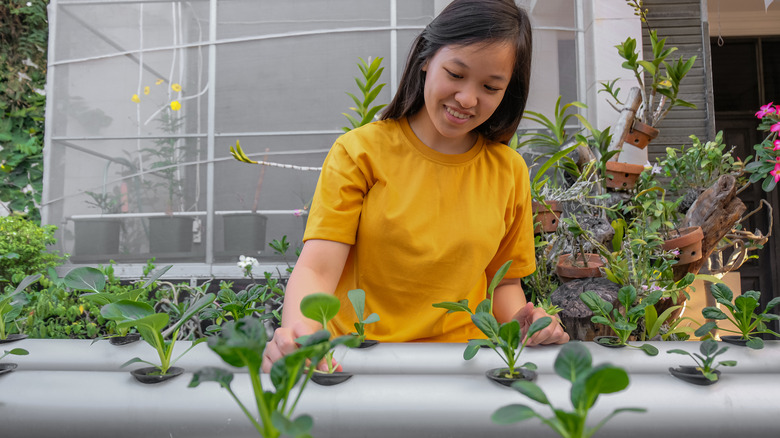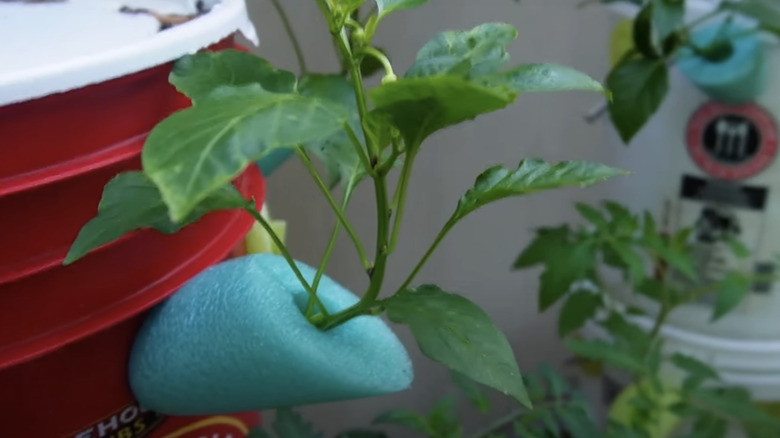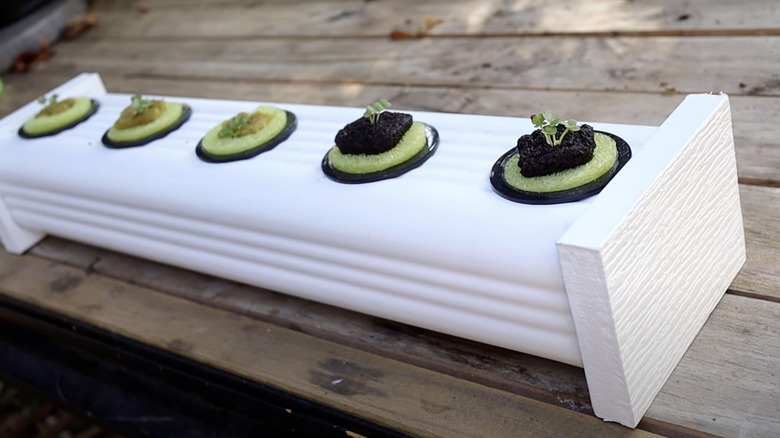The Biggest Problem With Using A Pool Noodle For Hydroponic Gardening
Hydroponic gardening is a great way to grow plants while saving space and using fewer resources; however, some methods may not work as well as others. While pool noodles can be a plant lover's dream for starting seeds for your hydroponic garden, these foam swimming accessories could leak rainwater into your outdoor deep water culture (DWC) systems when used as supports. This can cause problems for your plants since additional water will dilute the nutrients that you've put in your hydroponic system.
Since pool noodles have a wide hole in the middle, they can work well as supports for larger plants like tomatoes. When the noodles are cut and inserted into a DWC system at an angle, the opening at the center could collect rainwater and direct it into your hydroponics. While this is a downside, pool noodles can be great, inexpensive tools for your soil-free garden as long as you are mindful of how you install them to ensure they won't catch rainwater. Also be sure to choose well-made ones, as some pool noodles contain chemicals, such as polystyrene and polyvinyl chloride (PVC), that will end up in the water over time, possibly affecting your plants.
Problems caused by pool noodles in hydroponic gardening
Rainwater seeping into your garden might not seem like a problem, but when you grow plants hydroponically it has the potential to change the balance of your system. Not only will pool noodles allowing rainwater inside make your nutrients less concentrated, but the water might have debris or minerals inside it that could affect your system. Hydroponic gardens rely on a stable pH level and having the right amount of various nutrients, since there is no soil to get nutrients from.
Changing the composition of your system, even if it's just extra water, will alter the pH. When pH levels shift too much in either direction, it can make it more difficult for your plants to absorb the nutrients in the water. While pool noodles could cause this issue in some hydroponic gardens, there are many ways to use this foam in hydroponic systems without causing trouble.
Properly using pool noodles for hydroponic gardening
If you've been setting up a deep water culture system for your plants, pool noodles can still make good supports. It simply depends on how you use them to hold your plants. When working with a DWC system, you'll want to make sure that it is sealed to prevent any water or sunlight from getting in. If your hydroponic garden is always indoors, you won't need to worry about your pool noodles letting any rainwater in, and you could insert them diagonally on the side of your container; however, this might not be the best system outdoors.
For those that already have a container or bucket with holes cut into the sides for your plants, try cutting your foam into thick discs that will fit tightly in the holes. Now, your plant should be able to stick out of the system without the noodle acting as a funnel, but you'll likely need to use more supports, like a trellis or ties, to make sure your plant stays upright. A simpler method may be to make holes in the lid of your container, then insert your foam discs here. Your plants should stay nicely in place and if there's a lot of room in the center of the noodle, you could use rockwool, a container gardening substrate, to fill in the space. If you don't want to deal with pool noodles, try using net pots to hold your plants instead.


